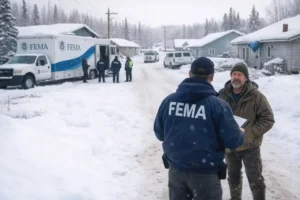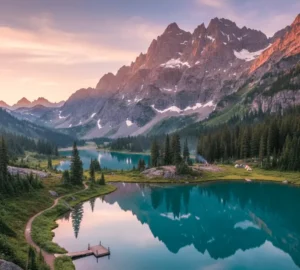Alaska is not just famous for its beautiful landscapes. Hidden beneath its surface are precious treasures like jade, garnets, and gold. Alaska’s hidden gemstones and minerals deeply connect to its culture and history. In this article, we will explore the story of these valuable materials and how they shaped Alaska’s past, present, and future.
The Gold Rush Legacy:
Gold is Alaska’s most famous mineral, and its discovery forever changed the state. In 1896, the Klondike Gold Rush brought an influx of prospectors, transforming quiet, remote areas into booming towns. Nome and Fairbanks, among others, became bustling centers of economic activity as hopeful miners came to try their luck.
Modern Gold Production in Alaska:
Although the days of the Klondike are long past, Alaska’s gold mining industry is still going strong. In 2023, Alaska’s mines produced approximately 728,000 ounces of gold, valued at around $1.4 billion based on an average price of $1,940 per ounce. Large-scale mines continue to produce gold in impressive quantities, contributing heavily to the state’s economy.
| Mine Name | Production Start Year | Gold Output by 2019 |
| Pogo Mine | 2006 | Over 4 million ounces |
| Kensington Mine | 2010 | Over 1 million ounces |
| Alaska-Juneau Mine | 1893-1946 | $94 million (gold, silver, and lead) |
- Pebble Mine: This site is the world’s largest undeveloped copper-gold deposit, containing other valuable minerals like molybdenum and silver. Its discovery can potentially continue Alaska’s legacy of gold production into the future.
Alaska Gold Economy:
Gold mining remains a pillar of Alaska’s economy, providing employment and generating revenue for the state and its people. Mining continues to support thousands of jobs, and the output of gold contributes heavily to the state’s exports and overall economic health.
Other Minerals in Gold Mining:
The total value of all materials extracted from Alaska’s mining operations in 2023 was approximately $4.25 billion, which includes gold, zinc, silver, and other minerals.
| Mineral | Total Production (As of 2021) |
| Gold | 620,000 ounces |
| Zinc | 36 billion pounds |
| Lead | 7.7 billion pounds |
| Silver | 16.7 million ounces |
Jade: Alaska’s Official State Gem
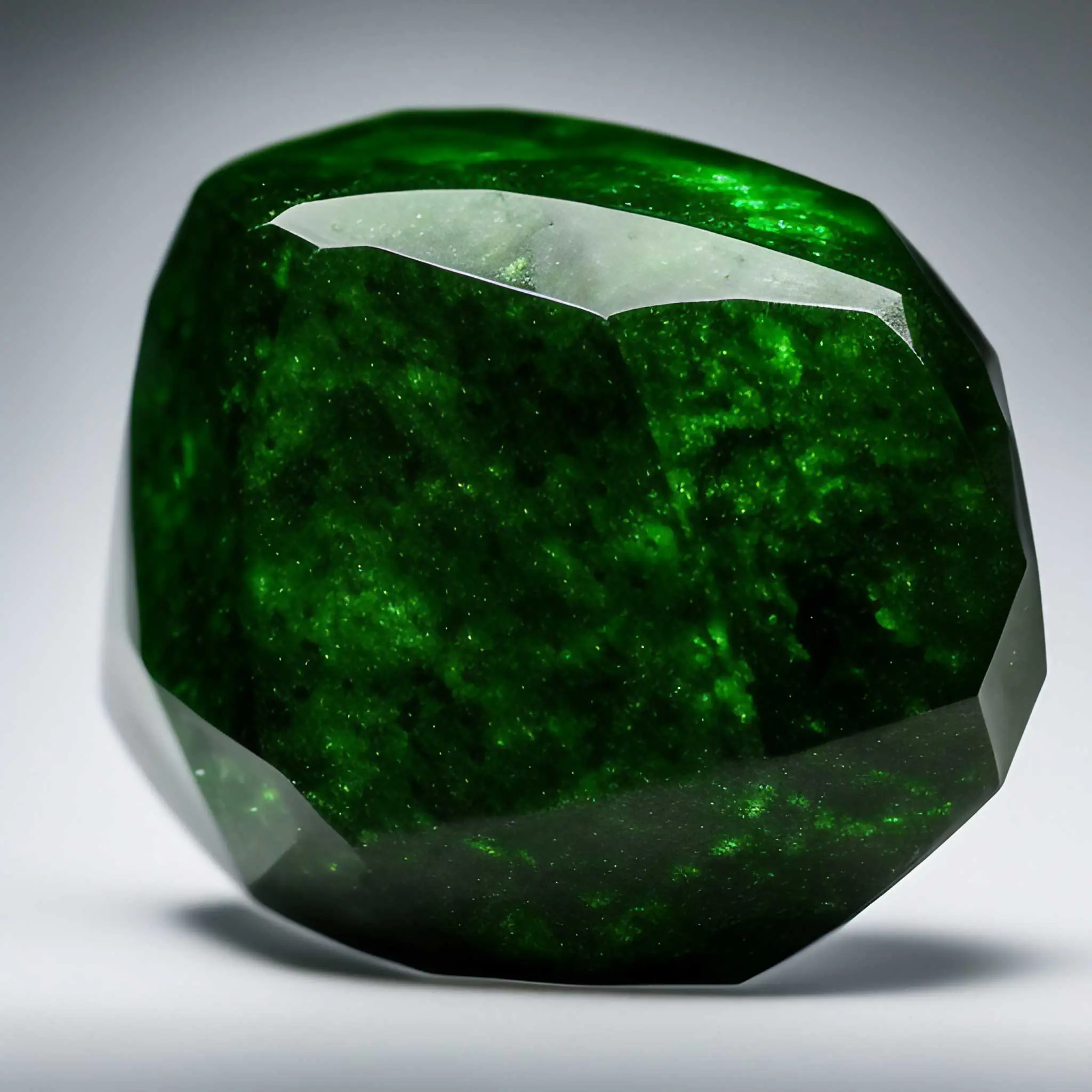
A Gem with Cultural and Historical Significance:
Jade has been an important part of Alaska’s heritage for centuries. Recognized as the state’s official gemstone in 1968, jade has long been used by Native Alaskans for both practical and artistic purposes. The stone’s durability made it ideal for crafting tools, while its beauty made it perfect for creating jewelry and decorative items.
Main Jade Deposits:
- Jade Mountains: Located south of Ambler, this area has significant jade reserves.
- Kobuk River Region: Known as a source of jade since the 1940s.
Jade’s significance in Alaska goes beyond its physical properties. It is a symbol of the land’s rugged beauty and has been passed down through generations in the form of handcrafted items. Today, local artisans continue to shape jade into stunning jewelry and carvings, keeping this tradition alive.
The Importance of Jade in Native Alaskan Culture:
Native Alaskans historically used jade for tools, but they also valued the stone for its aesthetic qualities. The gemstone is often crafted into detailed carvings and is a part of the region’s artistic heritage.
Uses of Jade:
- Tools: Known for its durability.
- Jewelry and Carvings: Crafted by Native Alaskan artisans and passed down through generations.
Garnets: Alaska’s Hidden Treasures
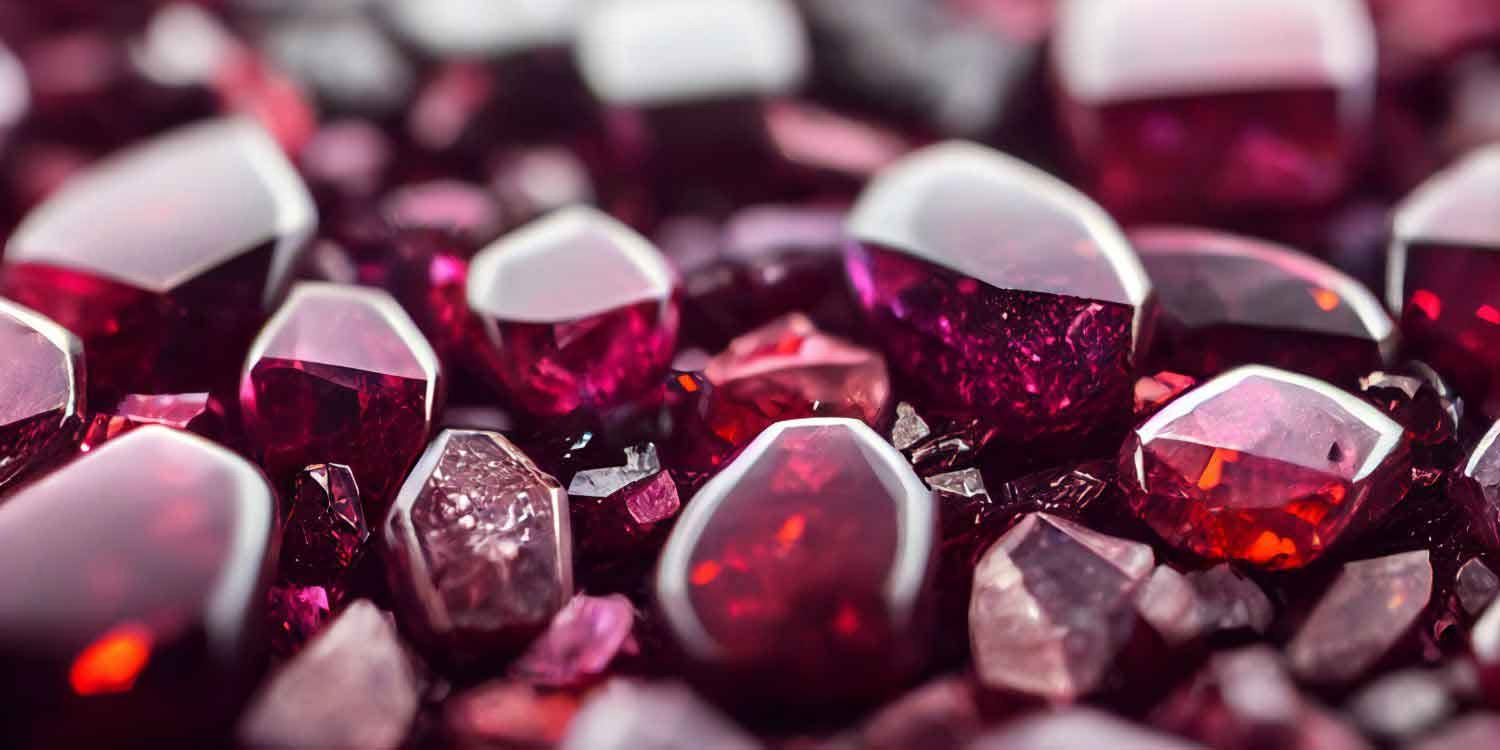
Discovering Garnets in Alaska:
Garnets, known for their striking red and purple hues, are another precious gemstone found in Alaska. Although less famous than jade or gold, garnets have played an important role in the state’s history. These gems are often found in natural deposits, especially in riverbeds, making them popular for gem hunters and collectors.
Garnets Locations in Alaska:
- Wrangell: A hotspot for garnet hunters.
- Ruby: Another popular site for garnet collection.
Garnets: From the Past to Today
Like jade, garnets were historically used by Native Alaskans, particularly for personal decoration and trade. Today, garnets remain a favorite among collectors and tourists who travel to Alaska to find these gems.
Modern Uses:
- Garnets are often used in jewelry.
- Collected as souvenirs and keepsakes.
The Impact of Mining on Alaska’s Economy
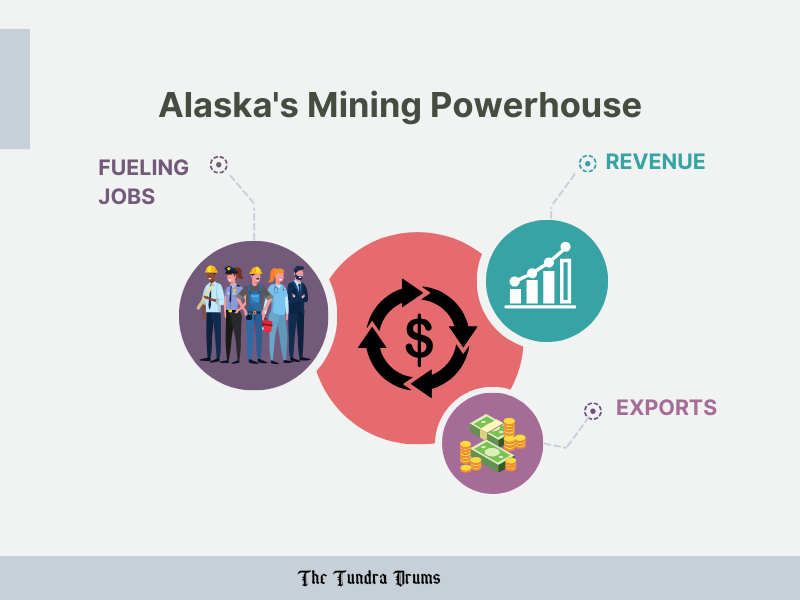
Mining: An Economic Powerhouse
Mining has long been a vital part of Alaska’s economy. From gold to zinc and other minerals, mining operations have provided significant employment and contributed millions of dollars to the state’s economy.
| Year | Key Figures |
| 2019 | 2,675 full-time mining jobs |
| Nearly 9,400 direct and indirect jobs | |
| $740 million in payroll | |
| $162 million spent on exploration | |
| $225 million on development | |
| $1.7 billion in mineral export value | |
| $37 million in local government revenue | |
| $112 million in state government revenue | |
| $242 million paid to Alaska Native corporations |
The mining industry in Alaska is not limited to just gold. Zinc, lead, and silver are also extracted, contributing to both the state’s economy and the global market. The diverse range of minerals highlights Alaska’s significant role in mining.
Zinc Production:
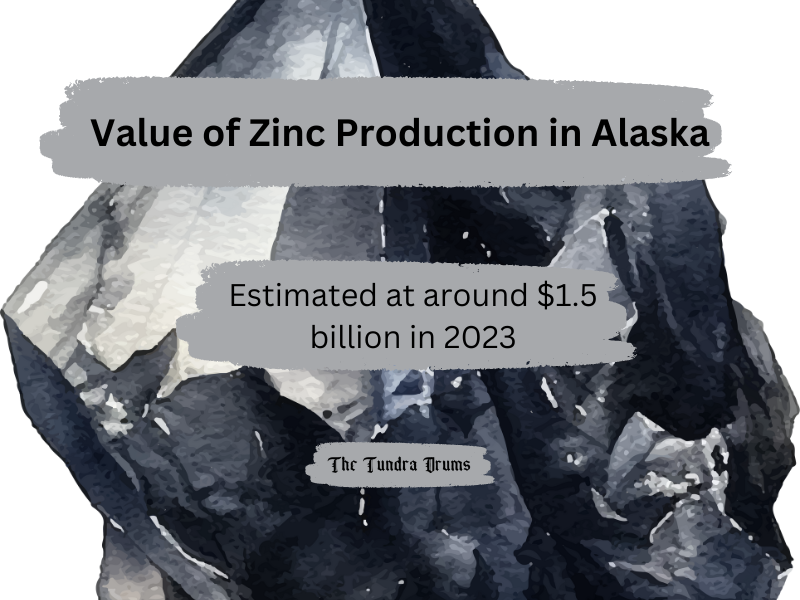
Total Zinc Produced (2023): 539,800 metric tons (approximately 1.19 billion pounds) from the Red Dog Mine, which accounts for about 4.5% of the global zinc supply.
Lead Production:
Total Lead Produced (2023): Approximately 113,000 metric tons (about 249 million pounds) of lead as a byproduct from the Red Dog and Greens Creek mines.
Lead Reserves at Red Dog Mine: Proven reserves include approximately 670,000 metric tons of lead.
Silver Production:
Total Silver Produced (2023): The Greens Creek mine produced approximately 47,000 metric tons of silver as a byproduct, contributing to Alaska’s status as one of the largest silver producers in the U.S.
Silver Reserves at Greens Creek Mine: The mine hosts about 10.02 million tons of proven and probable reserves, averaging 10.05 ounces per ton and totaling around 105.2 million ounces of silver.
Modern Mining: Striking a Balance
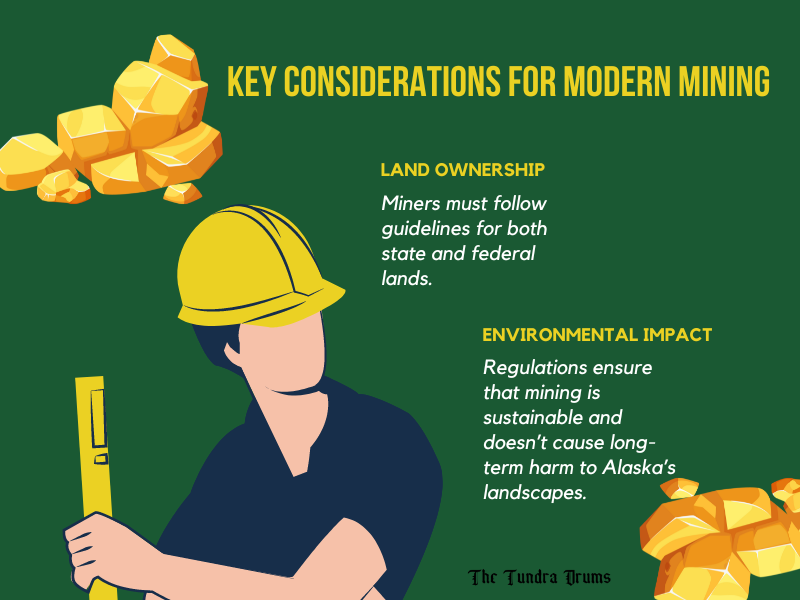
Mining and Environmental Responsibility:
Today, mining operations in Alaska face more regulations than ever before. Companies must balance resource extraction with environmental preservation to ensure that the state’s natural beauty is protected. This includes adhering to strict land ownership rules and state or federal regulations, which are designed to minimize the environmental impact of mining activities.
Sustainability in Mining:
As mining technology has improved, so too have the efforts to reduce the environmental footprint of extraction. Alaska remains a key player in mining, but the focus is now on balancing economic growth with the preservation of its natural resources.
Safety and Security in Alaska’s Gem Mining Regions
As more gem enthusiasts and prospectors head to Alaska in search of jade, garnets, and gold, safety in these remote areas becomes even more important. Alaska’s unique geography, with vast wilderness and a small population, offers both opportunities and challenges when it comes to keeping people and property safe.
Crime Statistics in Alaska:

When looking at crime in Alaska, there are some things to keep in mind:
- Overall Crime Rate: The state has about 25.48 crime incidents per 1,000 people, which means there’s a 1 in 132 chance of being a victim of crime.
- Violent Crime: Violent crime is higher in Alaska compared to the rest of the U.S., with about 758.9 incidents per 100,000 people, much higher than the national average of 380.7.
- Property Crime: Property crime is lower, at 8.0 incidents per 1,000 people, which is an improvement from 9.9 incidents the previous year.
- Specific Crime Trends (2022):
- Murders increased by 67%, with 70 homicides compared to 42 in 2021.
- Property crimes dropped by 2.7%.
- Sexual assaults also decreased by nearly 6%.
How Alaskans are Staying Safe?
With these crime rates in mind, many Alaskans have taken steps to protect themselves and their communities. Over the past year, around 24% of residents reported increasing their security measures. Here’s how they are doing it:
- Firearms: 46% of residents keep firearms for protection.
- Security Cameras: 41% of households have installed security cameras.
- Guard Dogs: 38% of families have dogs for added security.
These safety precautions are especially important in remote gem mining regions, where help from law enforcement may take time to arrive.
Community Involvement and Law Enforcement

Keeping gem mining regions safe isn’t just about individual actions. Strong community engagement also plays a big role. Many Alaskans are involved in neighborhood watch programs and community policing initiatives. This local involvement mirrors efforts found in safe cities, where increased police patrols and neighborhood engagement help reduce crime. They create a safer environment for both residents and visitors.
In areas popular with gem seekers, having a strong law enforcement presence and active community participation helps ensure that both people and their belongings stay safe.
Regulations for Gem Mining:
Alaska has strict rules when it comes to mining, designed to ensure that both the land and people are protected:
- Land Ownership: If you’re mining in areas like Jade Mountain or near the Wrangell garnet deposits, it’s crucial to know where you are. Miners must avoid trespassing on private or claimed land.
- Permits: Following the rules and getting the proper mining permits is essential. This not only keeps miners on the right side of the law but also ensures that mining is done safely and responsibly.
Conclusion
Jade, garnets, and gold are much more than just valuable resources in Alaska. They are a part of the state’s rich history and culture. From the bustling days of the Klondike Gold Rush to modern mining operations, these hidden treasures have played a crucial role in shaping Alaska’s identity. The combination of past discoveries and ongoing efforts to mine responsibly ensures that these resources will continue to influence the state’s future.









